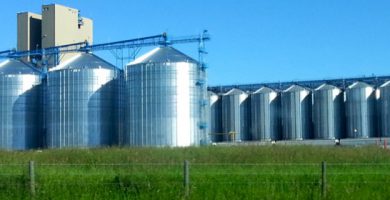Value creation is on the mind of every brewer.
How do you optimize your current malting allocation? How do you balance stability with the lowest long-term malt pricing? Are you the best ‘parent’ to run your own malting plants most efficiently? Can you be a low-cost quality malt producer?
Let First Key help you answer these questions. We review, plan and implement competitive malt strategies that create real value for our clients. Our services include:
Review of Existing Situation
Malt from own malting plants:
- A technical audit of existing malting sites, costs and conditions, KPIs.
- Benchmarking with other malt plants in the same market and with industrial maltsters. Identification of constraints.
- Evaluate quality of local barley purchase or need to import
- Review of agreements with traders and specific agreements with farmers, cooperatives, merchants.
- In-house and external storage, financing (cash management).
- Determine availability of (quality) local barley and does it represent good value for beer marketing
- Determine if there is a need for a specific internal structure devoted to malting activity
- Determine any gain in synergies, such as sharing utilities, use of steam, people (maintenance)
Malt from local/regional suppliers (we will get answers to the following questions):
- Is it worth reviewing existing contracts and the conditions for renegotiation?
- How expensive compared to present market price conditions?
- What additional values do the industrial suppliers bring just in time deliveries, but security of supply?
- Quality (how much can it be justified in the whole chain)?
- Better cash management (no financing of stocks)?
- Guarantee of price volatility?
- Hedging tools?
- Lower TCO (total cost of ownership)?
- Ability to bring new barley varieties, a better malting process, a better fit to brewers’ requirements (higher DP, if more adjuncts, higher level of FAN, and their consequences in terms of brewers’ benefits: higher extract, better filtration, improved fermentability, etc.)?
What is the supply & demand situation?:
- Evaluation of brewers’ total requirements for malt (how many kg malt per hL of beer for competitors?) — in the country, in the region (neighboring countries, if getting malt from these countries make sense from a logistic/delivery point of view (total cost delivered).
- Historical data of barley production in the different countries.
- Existence of (barley) seed breeders, seeds multiplicators at farmers’ level.
- Capacity of local farmers to address quality requirements and meet them.
- Who are the largest players locally? What are their respective strategies?
- Who would be able to challenge them (any other small/middle size maltster)?
- Do they have strong links with competitors?
Development of a Procurement Strategy
Building own malting plants:
- Can you be a quality malt low cost producer?
- Do you have the production costs to become a low-cost producer?
- Recommendations on what should be done/invested to achieve these costs objectives. Economic and financial consequences if recommendations are implemented.
- If achievable, do you want to invest in a non-core activity?
What are/would be the benefits of stopping malting activity:
- Focus on core business.
- No cash in agriculture (barley pre-contracting, storage, etc.).
- Lower total cost of ownership?
- How to identify/measure (brewing yield? cost of raw material per hL of beer?).
- Reducing head count?
What are the risks of stopping malt activity:
- Security of supply should be guaranteed.
- What if the only producing plant of the supplier fails (for whatever reason)?
- Volatility of prices: How to fix it.
- What is the malt supplier’s policy in this area?
- Long term agreements with fixed price, based on local barley contracted price – but what about crop failure?
- Has the malt supplier a really dedicated team to agriculture?
- How do they advise in advance of any potential mishaps?
Establishing your requirements:
- No limit in requirements is the base for discussion… but secure the supply chain.
- How are you regarding decreasing malt usage?
- And if less malt, then what should this malt be (higher FAN, higher diastatic power, other)?
- Identify future quantities required based on you long range plan.
- Can the quantity be flexible (will it depend on malt price)?
- In case of abundant crop, where is the lowest level?
- What is the interest for adjuncts and enzymes?
- What is the vendor’s malt storage policy at brewery’s gate?
- Transport specs (food safety).
- Request for competitive information on barley and crop prospects.
- Competition clause? Other clauses?
Evaluate supply and procurement trends:
- What are the leverages that you can negotiate to bind a malt supplier who is retained for short term (transactional relationship) purchases to a long-term commitment?
- How do you estimate the future local/regional supply and demand situation?
- Evaluation of (all) brewers’ total requirements for malt.
- How many kg malt per hL of beer for competitors in the long run — in the country and in the region (neighboring countries)?
Risk analysis:
- How secure is the malting barley cultivation locally?
- What are the competitive crops?
- How sustainable is the existence of the present maltsters in the region, mainly those with financial problems, or stand-alone structure (no backing), small-size family or individual business?
- What is the capacity of local farmers to address quality requirements and meet them?
- Who are the largest players locally: what are their respective strategies?
- Who would be able to challenge them (any other small/middle size maltster)?
- Do they have strong links with competitors (global players, local brewing companies)?
Implementation
We will review alternative procurement strategy models and prepare discussions with suppliers and make recommendations:
- Transactional: annual contracts; depend on market conditions – volatility risk; quality of product is no compromise
- Collaborative: closer relationships with supplier(s); tailor made product – consideration of crop fluctuation; hedging tools to be negotiated; security of supply – long term agreement to be considered; value added partnership to demonstrate; benefit of new technology developed by supplier(s)
- Strategic Partnership: total outsourcing of non-core business; supplier to take care of your maltings; buys the assets / rents the assets; can decide to close; “buy” the capacity against secured sale of same (or bigger or lower) quantity of malt; supplier to originate malt from best located production plant; commitment by supplier to deliver the highest value, i.e. the lowest total cost delivered.





